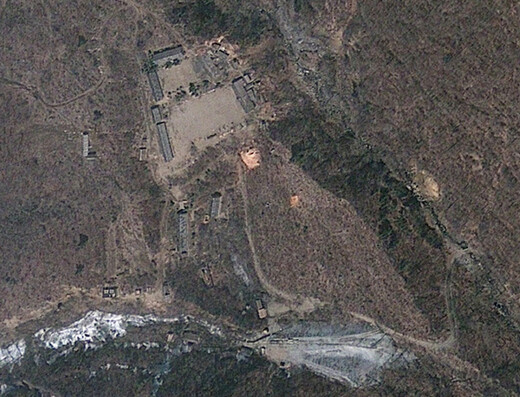North Korea could be developing a hydrogen bomb (original) (raw)
By Kim Kyu-won, staff reporter
The South Korean government is under the impression that if North Korea goes ahead with its third nuclear test, it would likely use a small and lightweight nuclear warhead that could be mounted on a missile. It also appears likely that it will use highly enriched uranium instead of plutonium, which it is difficult to produce more of. Speaking before the National Assembly’s national defense committee on Feb. 6, Joint Chiefs of Staff chairman Jung Seung-jo raised another possibility: that North Korea could begin developing a hydrogen bomb, a weapon with hundreds of times the force of an atomic bomb.
■ Testing a missile warhead?
Nuclear physicist Siegfried Hecker, who has visited North Korea on numerous occasions, told Yonhap News in a Feb. 6 interview that the chief aim of the country’s nuclear test was to develop something small and lightweight. The South Korean Ministry of National Defense also has concluded that their goal is to develop something small and light enough to be mounted on a missile. A nuclear device carried by missile is the most deadly of weapons.
The Scud B missile carries a warhead weighing up to 1,000 kg and measuring 90 cm in diameter. But the actual size of the nuclear warheads mounted on missiles varies between 110 kg (the US) and 600 kg (China). For North Korea to succeed, its weapon would have to weigh less than 1,000 kg - the lighter the better. Generally, when other countries have conducted their first nuclear tests in the past, the devices weighed between 1,300 kg and 2,200 kg. North Korea’s first device is believed to have weighed somewhere in this area. The question now is whether it can succeed in drastically reducing the weapon’s weight.
Even if it does come with a light enough warhead, another question is whether it is capable of linking it to its rocket launch technology. In principle, a country that is capable of launching a satellite can also develop an intercontinental ballistic missile (ICBM). But Hecker was skeptical, saying it would take several launch attempts, and about five years, to develop a functioning ICBM because of the necessary reentry technology. In other words, if North Korea does come up with a lightweight nuclear device, it would be able to launch an armed ICBM toward the continental US in roughly five years.
■ Plutonium? Uranium? Hydrogen?
For its test, North Korea is expected to detonate a device using highly enriched uranium (HEU). The reason for this is its depleted stock of plutonium, which was used for the previous two tests. It is believed to have produced about 50kg of plutonium since 2002 through reprocessing of spent fuel rods, with around 40kg of it left after its two tests. One nuclear bomb requires 6kg of plutonium, which means North Korea could make six to seven of them with its current stores. Its problem is that it won’t be able to produce any more of it in the near term because its reprocessing facilities were disabled in 2008 as part of an agreement reached in the six-party talks.
Instead, it produced another type of weapon through uranium enrichment. When Hecker visited in 2010, North Korean authorities showed him centrifuge facilities in Yongbyon, North Pyongan province, and told him they had 2,000 of the devices. With that equipment, it would be able to produce 40kg of HEU in a year. In other words, it could have as much as 40 to 80kg of it already. This could be used to make two to six devices, since one bomb requires 15 to 20 kg of HEU. Hecker estimated that North Korea already had one or two such devices developed.
Another possibility that has been suggested is that North Korea may detonate both an HEU device and a plutonium device at the same time. Analysts said that Pyongyang’s repeated mention of “qualitatively and quantitatively increasing the nuclear deterrent” may have been a reference not only to the development of lightweight uranium-based weapons, but also to a hydrogen bomb. Speaking before the National Assembly’s national defense committee on Feb. 6, Jung said the military was “not ruling out the possibility that North Korea will test a boosted weapon as the next stage before, a hydrogen bomb using nuclear fusion.” A hydrogen bomb has hundreds of times the force of an atomic weapon.
Please direct questions or comments to [english@hani.co.kr]
